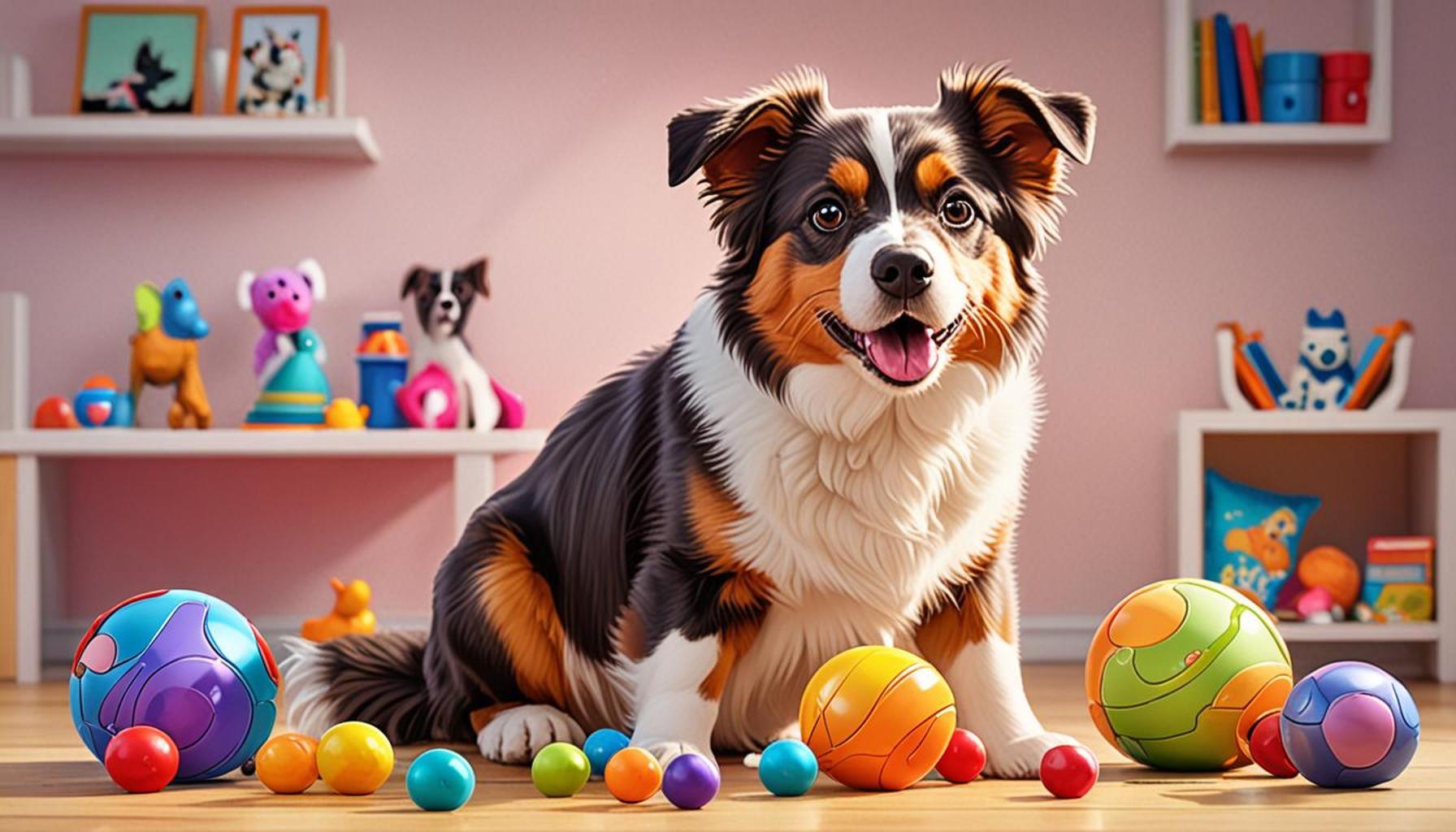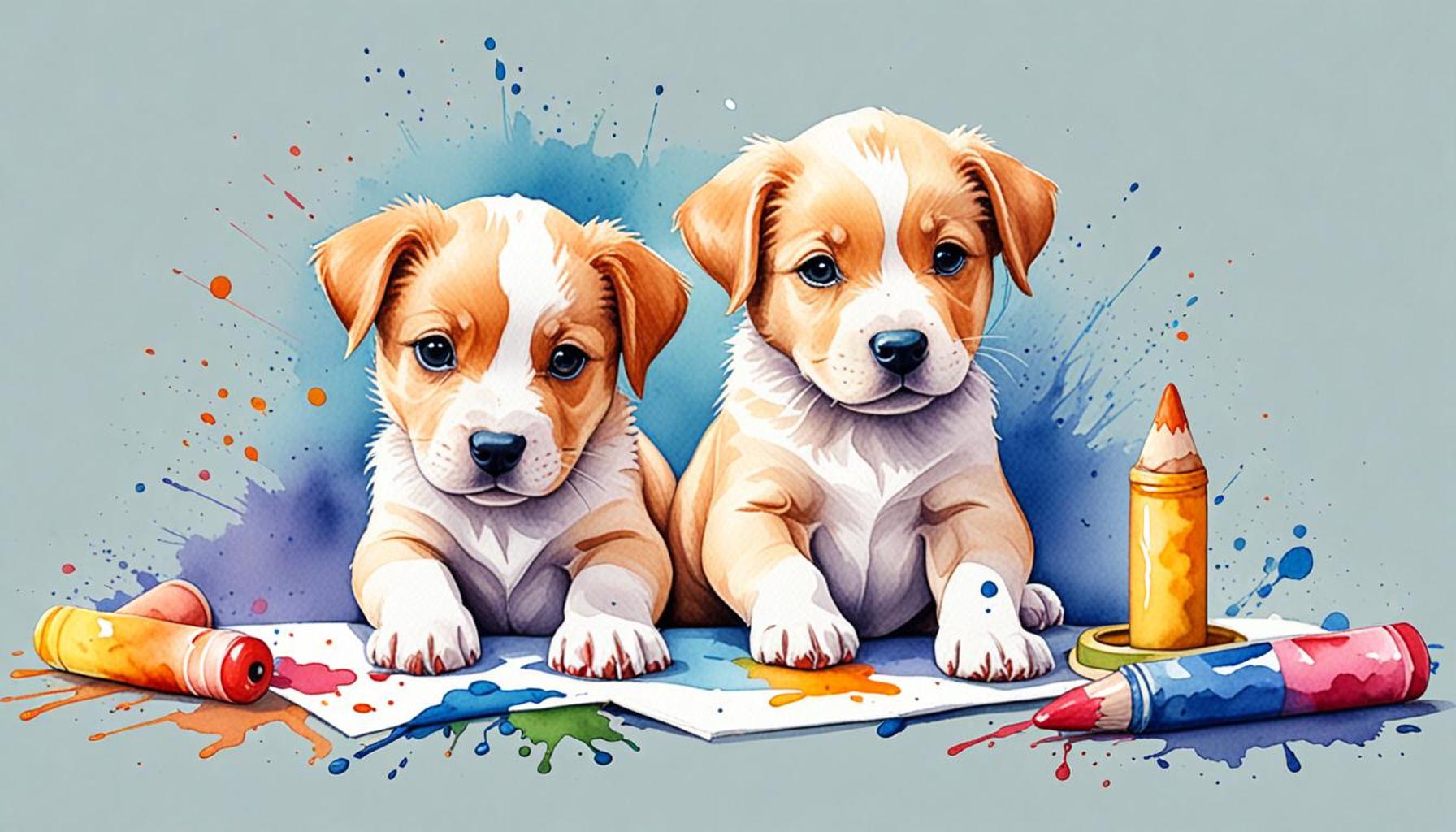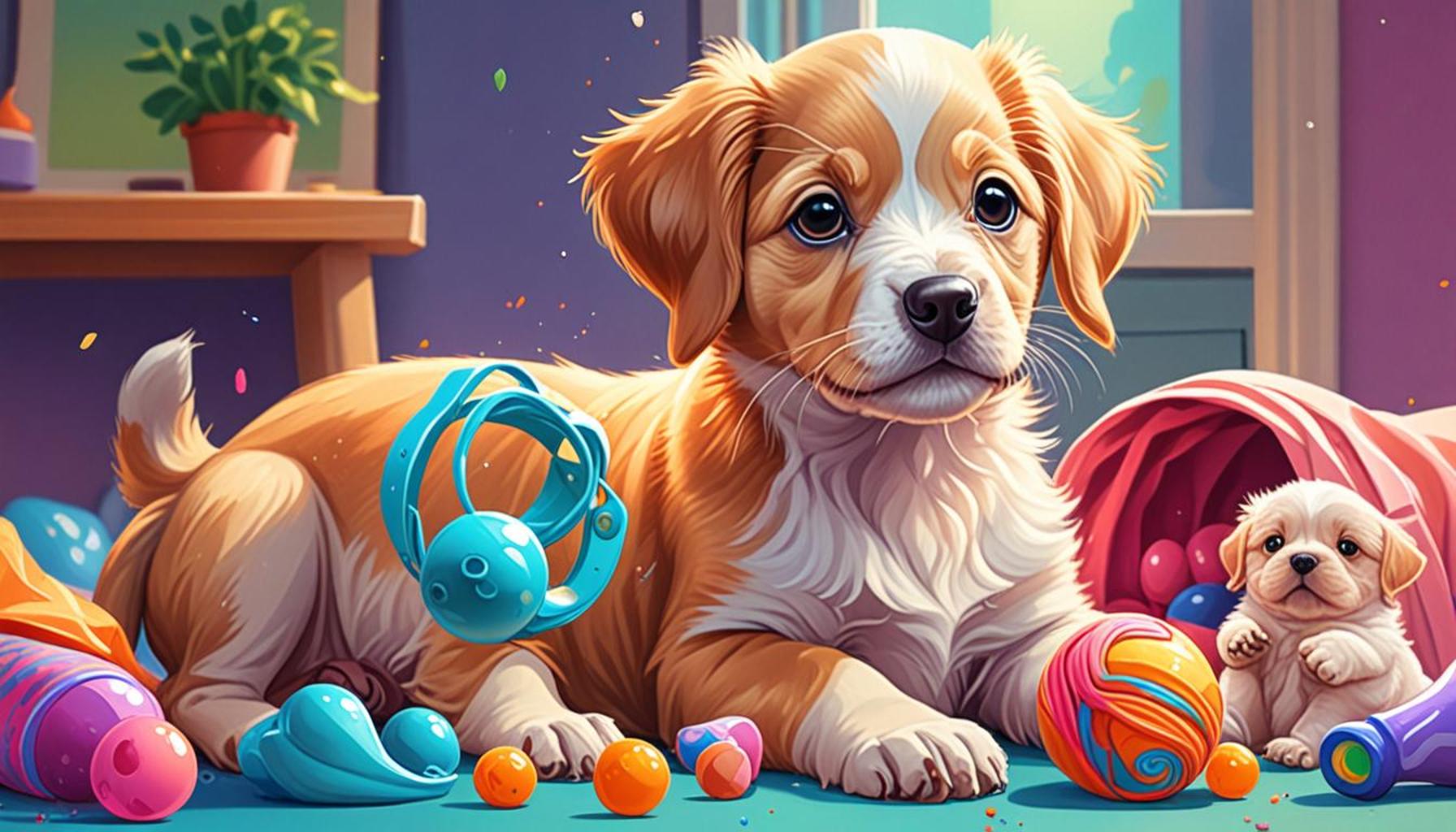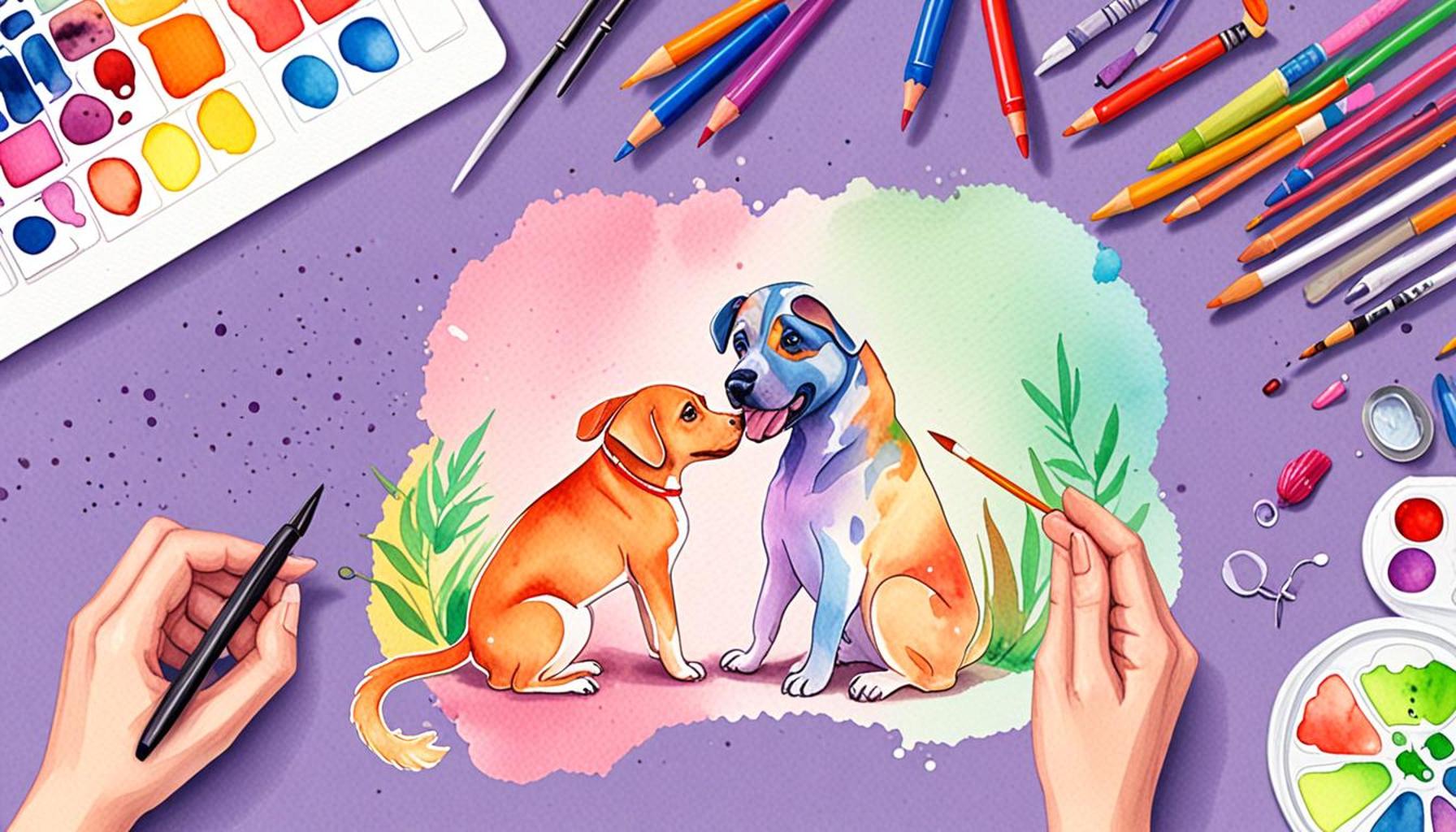How to Use Interactive Toys to Enhance Pet Training

The Role of Interactive Toys in Pet Training
In recent years, interactive toys have dramatically transformed how pet owners approach training. Far from mere sources of entertainment, these innovative tools serve as invaluable training aids that can significantly enhance your pet’s behavior and skill set. They create an engaging atmosphere for both pets and their humans, making learning not only effective but also fun.
By integrating interactive toys into regular training routines, pet owners have noted substantial improvements in their animals’ obedience and cognitive prowess. Below are several noteworthy benefits associated with using these tools:
- Stimulate Mental Engagement: Interactive toys often require pets to think critically and solve problems. For example, puzzle toys that dispense treats when correctly manipulated encourage dogs and cats to engage their intellect, ultimately leading to enhanced cognitive skills that foster better learning.
- Encourage Active Play: Many interactive toys are designed to promote physical activity, an essential aspect of a pet’s overall well-being. Automatic ball launchers stimulate dogs to run and chase, not only keeping them fit but also reducing behavioral issues that arise from boredom and inactivity.
- Strengthen Bonding: Incorporating play into training sessions creates shared experiences that deepen the emotional connection between pet and owner. Using toys to teach commands through fun games encourages pets to view their owners as playmates, fostering trust and cooperation.
In addition to these benefits, interactive toys can serve as effective mechanisms for teaching essential commands and reinforcing positive behaviors. For instance, a dog that learns to fetch using an automatic ball launcher may also begin to understand commands like “bring” and “drop it.” This multifaceted learning approach creates a dynamic training experience that keeps pets engaged.
The diverse market for interactive toys offers something for every pet. From treat-dispensing puzzles that challenge a pet’s problem-solving abilities to engaging robotic toys that encourage exercise, owners can select the perfect match for their furry companions. Consider a toy that resonates with your pet’s personality: an energetic dog might thrive with a frisbee or agility set, while a curious cat may find joy in a feather-carrying robotic mouse.
As you navigate the world of interactive toys, it’s crucial to explore effective training strategies that utilize these playful devices. Resources such as online forums, pet training classes, and expert articles can provide insights into innovative ways to enrich your pet’s learning experience. With the right approach, you will find that play is not just a pastime; it is a powerful tool in shaping a well-rounded, happy pet.
DISCOVER MORE: Click here to enhance your pet training skills
Choosing the Right Interactive Toys for Your Pet
Selecting the ideal interactive toy for your pet is a critical step in enhancing their training regimen. With an array of options available, it’s essential to consider your pet’s individual needs, preferences, and skill levels. Interactive toys can vary widely in complexity and purpose, meaning a toy that works wonders for one pet may not have the same effect on another. Here are some factors to keep in mind when selecting toys:
- Activity Level: Take your pet’s energy levels into account. An active dog may enjoy a ball launcher that encourages running and chasing, while a more laid-back pet might prefer a treat-dispensing puzzle that promotes mental stimulation over physical exertion.
- Size and Durability: Ensure that the chosen toy is appropriate for your pet’s size. Smaller pets may struggle with larger toys, and tough chewers require durable products that can withstand their enthusiasm. Look for toys made from sturdy materials that can endure wear and tear.
- Interactivity: Consider how the toy engages your pet. Some toys offer single challenges, while others provide multiple levels of difficulty that evolve with your pet’s learning. Gradually increasing the complexity of a toy can keep your pet interested and continually challenged.
- Safety: Always prioritize safety when selecting an interactive toy. Avoid toys with small parts that could pose a choking hazard or materials that might harm your pet if ingested. Reputable brands often provide safety guidelines for their products.
Understanding what motivates your pet can also guide your choice. For instance, if your dog is highly food-motivated, a treat-dispensing toy may be an excellent choice. This will not only capture their attention but also reinforce positive behavior through rewards. Similarly, cats often respond well to toys that simulate hunting, enhancing their natural instincts while providing training opportunities.
Incorporating Interactive Toys into Training Sessions
Integrating interactive toys into your training routine can make sessions more enjoyable and effective. Start by introducing the toy during short training intervals dedicated to specific commands. For example, use a treat-dispensing puzzle to teach the “sit” command: when your pet achieves the command, reward them with access to the toy. This reinforces the desired behavior while keeping your pet engaged and motivated.
Consider using interactive toys as part of positive reinforcement strategies. Whenever your pet successfully follows commands, reward them with playtime using the toy. This approach can help solidify their understanding of commands while stimulating mental engagement. Moreover, the anticipation of playtime can also serve as a great motivator for learning.
In summary, interactive toys can revolutionize pet training by adding excitement, enhancing problem-solving skills, and fostering a deeper bond between owners and pets. The right selection of toys combined with thoughtful incorporation into training routines not only makes learning effective but also provides lasting joy for both pets and their humans. Armed with this understanding, you are well on your way to creating a fun and interactive training experience that can transform your pet’s behavior.
| Training Reinforcement | Engagement |
|---|---|
| Interactive toys facilitate positive reinforcement during training sessions. By combining play with training, pets become more motivated to learn. | These toys keep pets engaged and focused, making training sessions more enjoyable for both the pet and the owner. |
| Using interactive toys can reduce resistance to training by creating positive associations with learning new commands or tricks. | Enhanced engagement leads to longer attention spans, resulting in better retention of commands over time. |
Interactive toys can be an excellent approach to enhancing pet training methodologies, leveraging fun and interaction to solidify behavior modification and command recognition. These toys not only entertain but also serve as tools for effective training strategies, helping to develop a deeper bond between pets and their owners. By incorporating these engaging elements into training, you can witness remarkable progress in your pet’s ability to learn and respond effectively to commands. They flourish within an environment where learning feels rewarding, which translates to successful and enjoyable training experiences.
DIVE DEEPER: Click here to learn more about clicker training
Enhancing Training Through Structured Playtime
Once you have selected the right interactive toys, the next step is to maximize their potential during training sessions. Structured playtime can be an effective way to reinforce commands and tricks while allowing your pet to enjoy their newfound toys. Here are some strategies to effectively use interactive toys in your pet training:
- Establish Clear Goals: Before incorporating interactive toys, define specific training goals for your pet. Whether you aim to teach basic commands like “stay” and “come” or advanced tricks, having clear objectives will help you focus the training sessions. Use the interactive toys as rewards for achieving these goals.
- Create a Routine: Consistency is critical in pet training. Schedule regular training sessions and integrate interactive toys into your routine. This consistency helps your pet understand expectations and become more responsive to commands. Incorporating toys like treat mazes or rolling balls can turn training into a game, making your pet eager to learn.
- Adjust the Difficulty: As your pet progresses in their training, adjust the complexity of the interactive toys. Many toys offer varying levels of difficulty which challenge your pet’s problem-solving skills and keep them engaged. Start with simpler puzzles and gradually introduce more complex ones as your pet becomes proficient.
- Vary the Activities: Keep training fresh and exciting by alternating between different interactive toys. This not only prevents boredom but also provides diverse mental challenges for your pet. For example, combine a tug-of-war toy with a puzzle feeder, allowing for both physical and mental exertion.
- Incorporate Group Play: If you have multiple pets or enjoy playdates, using interactive toys can enrich collaborative training. Allow pets to play together under your supervision, which can enhance their social skills while learning to follow commands in a stimulating environment.
Additionally, it’s essential to pay attention to your pet’s feedback during these interactive sessions. Not all pets respond the same way, so remain observant about what excites or frustrates them. If your pet seems discouraged by a specific toy, consider switching to a different one or revisiting simpler commands before gradually reintroducing the challenge.
Maximizing Engagement with Interactive Toys
To truly harness the educational power of interactive toys, engage in joint play with your pet. Actively participating in their toy playtime can amplify their motivation and enjoyment. For instance, when using a puzzle feeder, you can guide your pet through the initial stages, providing verbal encouragement and aiding them in discovering how to access the treats. This not only fosters a sense of achievement but also reinforces the bond between you and your pet.
Furthermore, consider integrating technology into your training. Smartphone-controlled interactive toys, like automated laser pointers or treat dispensers, can keep your pet entertained while giving you the flexibility to engage from a distance. Such innovations also allow you to maintain training consistency even when you’re not physically present.
By employing these strategies and approaches, your use of interactive toys evolves from mere play into a rigorous training tool. The blend of entertainment and practical skill development ensures that pets remain both happy and well-behaved, paving the way for a fulfilling relationship grounded in mutual understanding and enjoyment.
LEARN MORE: Click here to discover the significance of mental health for pets
Conclusion: Unlocking the Potential of Interactive Toys in Pet Training
In conclusion, integrating interactive toys into your pet training regimen offers a dynamic approach to learning that is both stimulating and effective. As we have explored, these toys serve not just as instruments of play but also as valuable tools that reinforce obedience, enhance mental skills, and foster stronger bonds between you and your pet. By setting clear objectives, establishing routines, and adjusting the difficulties of the toys, you create an environment where your pet can thrive and flourish.
Moreover, the essence of interactive training lies in its adaptability—by observing your pet’s responses and varying the activities, you can ensure that learning remains engaging and enjoyable. Remember to capitalize on modern technology, which can further enrich your training sessions with smart, responsive toys that keep your pet engaged even when you are not physically present.
Ultimately, the goal of using interactive toys to enhance pet training is a holistic approach to learning that promotes both physical and emotional well-being. As you embark on this journey, embrace the joy that comes from watching your pet learn and grow. Look for resources and communities that share similar interests in pet training with interactive devices, ensuring you stay informed and inspired. With patience and creativity, you can transform the mundane into a captivating adventure that brings years of happiness to your pet and strengthens your connection.


